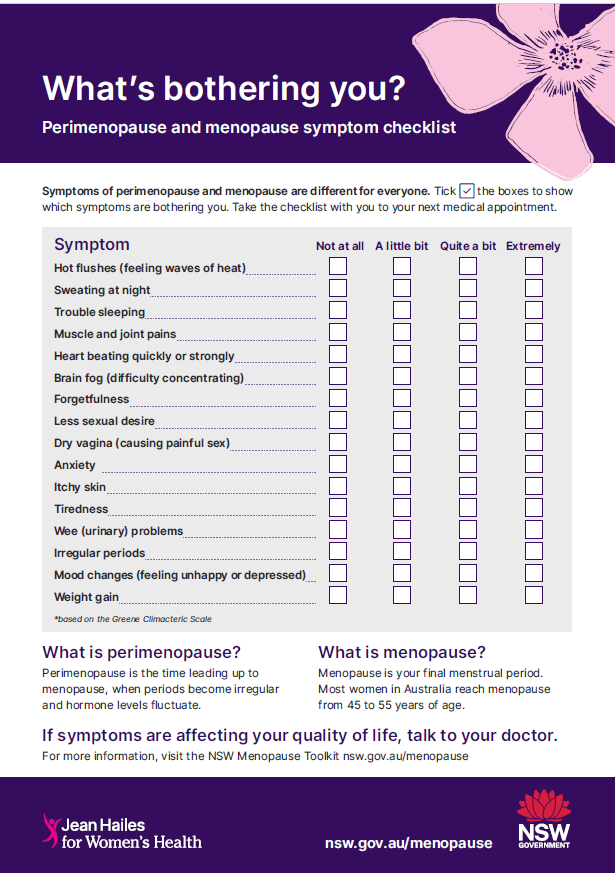Vaginal Atrophy, Lubricants, Moisturizers, Oestrogen, More showcases evidence-based information by Menopause Societies and International Sources.
Common or Not
How common is vaginal atrophy?
In Vaginal Atrophy: What Is Vaginal Atrophy? the (Australian) Jean Hailes for Women’s Health (JH) explain:
 “Vaginal atrophy is the thinning of your vaginal lining and vulval skin, caused by a drop in oestrogen levels around the time of menopause. Vaginal atrophy affects about 40% of postmenopausal women – and the risk increases with age.”
“Vaginal atrophy is the thinning of your vaginal lining and vulval skin, caused by a drop in oestrogen levels around the time of menopause. Vaginal atrophy affects about 40% of postmenopausal women – and the risk increases with age.”Vaginal Atrophy Treatment Options
What are some vaginal atrophy treatment options?
In Vaginal Dryness: Treatment Options the North American Menopause Society (NAMS) elaborate on:

- “Nonhormone Remedies
- Vaginal Lubricants…
- Vaginal Moisturizers…
- Regular Sexual Stimulation…
- Expanding Your Views of Sexual Pleasure…
- Vaginal Dilators…
- Pelvic Floor Exercises…
- Vaginal Hormone Therapy…
- An effective and safe treatment, low-dose vaginal estrogen…
- FDA-approved low-dose vaginal estrogen products…
- Dehydroepiandrosterone (DHEA; Prasterone)…
- Low-dose vaginal estrogen or DHEA may be options for…”.
Different Differences
Can different Countries have different brands for the treatment of vaginal atrophy?
Yes, so talk to your health care provider about your Country’s brands of vaginal lubricants, vaginal moisturizes, vaginal estrogen, systemic hormone therapies and more, that may be suitable for your vaginal symptoms.
Vaginal Lubricants
What are some vaginal lubricants?
In Vaginal Atrophy: Diagnosis & Treatment – Treatment the (United States) Mayo Clinic include:
- “Water-based lubricants. These lubricants (Astroglide, K-Y Jelly, Sliquid, others) are applied just before sexual activity and can reduce discomfort during intercourse. Choose products that don’t contain glycerin or warming properties because women who are sensitive to these substances may experience irritation. Avoid petroleum jelly or other petroleum-based products for lubrication if you’re also using condoms, because petroleum can break down latex condoms on contact”.
In Vulvovaginal Atrophy the European Menopause and Andropause Society (EMAS) note:
Vaginal Lubricants
- May be water, silicone, hyaluronic acid or oil based
- Are usually used prior to intercourse
- Provide temporary relief of symptoms
- Can be used alone or with systemic or topical menopausal hormone therapy”.
Vaginal Moisturizers
What are some vaginal moisturizers?
In Vaginal Atrophy: Diagnosis & Treatment – Treatment the Mayo Clinic include:
- “Vaginal moisturizers. Try a vaginal moisturizer (K-Y Liquibeads, Replens, Sliquid, others) to restore some moisture to your vaginal area. You may have to apply the moisturizer every few days. The effects of a moisturizer generally last a bit longer than those of a lubricant”.
In Vulvovaginal Atrophy the EMAS note:
Vaginal Moisturizers
- May contain a bioadhesive polycarbophil-based polymer
- Are usually used on a regular basis, typically two or three times per week
- Can be effective for mild symptoms
- May cause local irritation
- Can be used alone or with systemic or topical menopausal hormone therapy”.
Vaginal Oestrogen
What are some forms of vaginal oestrogen?
In Vaginal Atrophy: Diagnosis & Treatment – Treatment: Topical Estrogen the Mayo Clinic include:
- “Vaginal estrogen cream (Estrace, Premarin). You insert this cream directly into your vagina with an applicator, usually at bedtime. Typically women use it daily for one to three weeks and then one to three times a week thereafter, but your doctor will let you know how much cream to use and how often to insert it
- Vaginal estrogen suppositories (Imvexxy). These low-dose estrogen suppositories are inserted about 2 inches into the vaginal canal daily for weeks. Then, the suppositories only need to be inserted twice a week
- Vaginal estrogen ring (Estring, Femring). You or your doctor inserts a soft, flexible ring into the upper part of the vagina. The ring releases a consistent dose of estrogen while in place and needs to be replaced about every three months. Many women like the convenience this offers. A different, higher dose ring is considered a systemic rather than topical treatment
- Vaginal estrogen tablet (Vagifem). You use a disposable applicator to place a vaginal estrogen tablet in your vagina. Your doctor will let you know how often to insert the tablet. You might, for instance, use it daily for the first two weeks and then twice a week thereafter”.
In Vaginal Dryness After Menopause: How To Treat It? I’m postmenopausal and often have vaginal dryness, which makes intercourse painful. Is there anything I can do about it? the Mayo Clinic also note:
- “If you’ve had breast cancer, talk with your doctor about the risks of vaginal estrogen therapy”.
Ospemifene
What is Ospemifene (Osphena)?
In Vaginal Dryness After Menopause: How To Treat It? I’m postmenopausal and often have vaginal dryness, which makes intercourse painful. Is there anything I can do about it? the Mayo Clinic include:
- “Ospemifene (Osphena), a selective estrogen receptor modulator (SERM) medication taken by mouth is used to treat painful intercourse associated with vaginal atrophy. This medication isn’t recommended for women who have had breast cancer or who are at high risk of breast cancer”.
Dehydroepiandrosterone (DHEA)
What is Dehydroepiandrosterone (DHEA)?
In Vaginal Dryness After Menopause: How To Treat It? I’m postmenopausal and often have vaginal dryness, which makes intercourse painful. Is there anything I can do about it? the Mayo Clinic include:
- “Dehydroepiandrosterone (DHEA), in the form of a nightly vaginal suppository is a treatment that may ease painful intercourse in menopausal women”.
Systemic Hormone Therapy
When may systemic hormone therapy be suggested for vaginal atrophy?
In Vaginal Atrophy: Diagnosis & Treatment – Treatment the Mayo Clinic include:
Alternative Medicine
Is alternative medicine recommended to treat vaginal atrophy?
In Vaginal Atrophy: Diagnosis & Treatment – Treatment the Mayo Clinic note:
Sexual Activity
May regular sexual activity help vaginal atrophy?
In Vaginal Atrophy: What You Can Do the JH explain:
Oils
Can vegetable oil, olive oil or sweet almond oil, be good-quality lubricants for intercourse?
In How Do I Deal With Vaginal Atrophy? — Ask Dr Jean the author explains:
- “2. For intercourse, use a good-quality lubricant. Natural lubricants include oils such as olive oil or sweet almond oil; however, if using condoms, note that these oils can cause them to break or tear”.
Flaxseed
Can flaxseed help with vaginal atrophy?
In Vaginal Atrophy: What You Can Do the JH explain:
- “Flaxseed – some research suggests it may help with vaginal dryness. Grind the flaxseed and add two tablespoons to your cereal, salad or smoothies each day”.
Vaginal Laser Treatments
Are vaginal laser treatments safe and effective for the treatment of vaginal atrophy?
In Vaginal Atrophy: Management and Treatment – What Are Nonhormonal Treatments for Vaginal Atrophy (GSM)? Laser Treatments the (United States) Cleveland Clinic note:
Health Care Provider
What if I think I have vaginal atrophy?
In Vaginal Atrophy: Can Vaginal Atrophy Be Reversed? the JH note:
 “You cannot reverse vaginal atrophy, but you can stop it from getting worse by seeking a diagnosis and starting treatment early. Research suggests that MHT eliminates vaginal atrophy symptoms in 75% of cases, while vaginal oestrogen therapy is effective in 80% to 90% of cases. Without treatment, vaginal atrophy may get worse over time”.
“You cannot reverse vaginal atrophy, but you can stop it from getting worse by seeking a diagnosis and starting treatment early. Research suggests that MHT eliminates vaginal atrophy symptoms in 75% of cases, while vaginal oestrogen therapy is effective in 80% to 90% of cases. Without treatment, vaginal atrophy may get worse over time”.Health Topics A-Z
Where may I find Health Topics A-Z related to Vaginal Atrophy, Lubricants, Moisturizers, Oestrogen, More?
In Health Topics A-Z you may find:
Links
Where may I find Links related to Vaginal Atrophy, Lubricants, Moisturizers, Oestrogen, More?
Your Country may have Links similar to:
Links
This Links List to third party websites is neither comprehensive nor exhaustive. Inclusion on this Links List does not imply endorsement or recommendation. Non-inclusion on this Links List does not imply non-endorsement or non-recommendation. Third party websites are not under the control of Meno Martha International Menopause Directory. Third party websites may contain explicit medical images and/or sexual references. Please read Meno Martha International Menopause Directory’s Links Policy before proceeding to a Link. Please contact Webmaster if you experience a problem with a Link.- BMS TV: Urogenital Atrophy
- Deciding About Hormone Therapy Use
- Dr Louise Newson: The Truth About the Menopause & HRT
- Endometrial Safety of Low-Dose Vaginal Estrogens
- Find A Menopause Practitioner [United States and Other]
- Find An AMS Doctor [Australasian Menopause Society i.e. Australia and New Zealand]
- Find Your Nearest BMS Menopause Specialist [British Menopause Society]
- Later Years (Around 50 Years and Over): Menopause and Post Menopause Health – Sexual Wellbeing and Intimacy During and After Menopause [+ Video: Menopause Is the End of Your Sex Life]
- Lubricant Alternatives: What To Use and What To Avoid
- Mayo Clinic Q and A: Managing Vaginal Dryness
- Menopause Map: Downloadable Resources – My Personal Path Print Tools: Questions for Your Health Care Provider
- Menopause Preparedness Toolkit: A Woman’s Empowerment Guide
- Menopause: Understanding the Changes and Finding Relief | Dr Susan Davis | The Proof Podcast EP 256
- Mymenoplan.org [My Menoplan, United States]
- Navigating Menopause: Expert Insights and Solutions | Dr Susan Davis | The Proof Podcast EP 245
- Non-Estrogen Treatments for Menopausal Symptoms
- Painful Sex (Dyspareunia)
- Perimenopause and Menopause Symptom Checklist

- Prosayla Supported By ISSWSH [International Society for the Study of Women’s Sexual Health]
- The Truth About Menopause Supplements | Dr Sarah Berry
- Therapy for the Effects of Menopause
- Vaginal Atrophy
- Vaginal Atrophy
- Vaginal Dryness
- Vaginal Dryness
- Vaginal Dryness After Menopause: How To Treat It? I’m postmenopausal and often have vaginal dryness, which makes intercourse painful. Is there anything I can do about it?
- Vaginal Dryness Alternative Treatments
- Vaginal Dryness: What To Do About It
- Vaginal Laser Therapy for GSM/VVA: Where We Stand Now – A Review By the EUGA Working Group on Laser
- Video Series-2022: Discussing Sexual Health Concerns With Your Health Care Professional
- Video Series-2022: Perimenopause, Signs, Symptoms, and Solutions
- Video Series-2023: NAMS 2023 Nonhormone Therapies Position Statement for Bothersome Menopause Symptoms
- Videos and Podcasts: Videos – Interviews: A Simple Approach To Menopause: The Menopause Quick Six (www.MQ6.ca)
- Vulvovaginal Atrophy
- Why Didn’t Anyone Tell Me This? Episode 3: Dr Annice Mukherjee: Your Essential Menopause Toolkit


